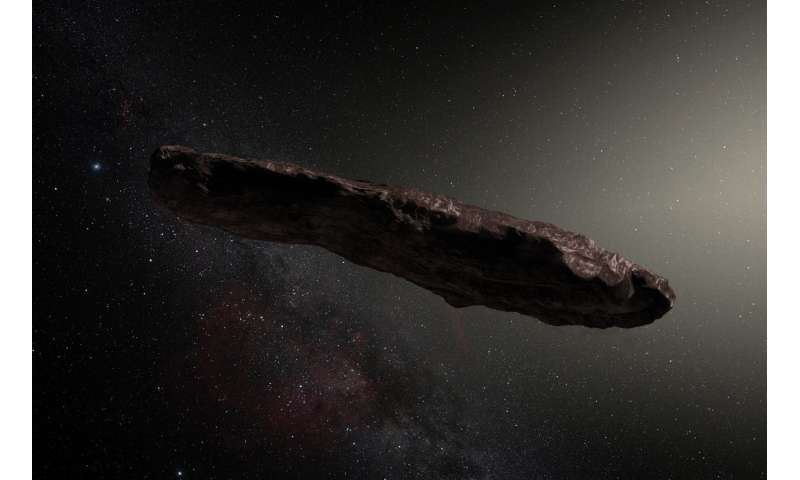Best of Last Week: The origins of 'Oumuamua, robots that eat metal, and writing dreams in a lab

It was a good week for space science as a large international team of researchers studying data from ESO's Very Large Telescope observed a star dancing around a supermassive black hole, once again proving that Einstein was right. And a team with members from several institutions in the U.S. and one in the U.K. discovered an Earth-size exoplanet orbiting in its star's habitable zone as they were reanalyzing old data from NASA's Kepler space telescope. Also, a pair of researchers, Yun Zhang and Douglas Lin with the Chinese Academy of Sciences and Tsinghua University, respectively, used computer simulations to show that objects such as 'Oumuamua could form due to the influence of tidal forces similar to those on Earth—and they further claimed that their formation theory explains all of 'Oumuamua's unusual characteristics.
In technology news, a team at the University of Pennsylvania's School of Engineering and Applied Science demonstrated scavenger technology that allowed a robot to 'eat' metal for energy by taking advantage of chemical bonds in metal and the surrounding air. Also, a group from the National Renewable Energy Laboratory built a six-junction solar cell that set two world records for efficiency. And a team at Virginia Tech debuted a 'fog harp' that can harvest atmospheric moisture even in the lightest fog. Also, a team at MIT developed a sleep lab that reads and writes dreams using a device they call Dormio—it monitors heart rate, muscle tone and skin conductance while the body is responding to dreams, and also plays sounds or words to influence them.
In other news, a team at MIT found that certain proteins may halt the severe cytokine storms seen in COVID-19 patients, slowing immune system overreactions. And a team at Drexel University conducted genetic 'barcode' tracing that revealed COVID-19's journey and evolution—part of which showed that there are six to 10 slightly different versions of the virus infecting people in the U.S.
And finally, if you are like billions of others around the globe trying to protect yourself from SARS-CoV-2 virus infection, you may want to check out the results of a study done by a team in China—they found that exhaled aerosols can spread up to 13 feet from a person—and shoes can carry the virus, too.
© 2020 Science X Network